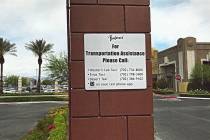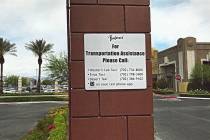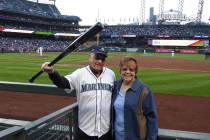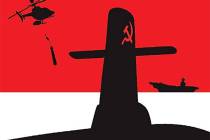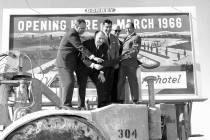Glider pilot’s lifetime of adventure began in World War II
World War II glider pilots were a special breed then, and they're a special breed now, as their ranks dwindle.
Olaf Barnard is the last World War II glider pilot living in Las Vegas, according to the National World War II Glider Pilots Association.
Barnard is a hale 88 and reminds me of another pilot, Chesley "Sully" Sullenberger. Barnard has that same calm, focused, reassuring presence Sullenberger demonstrated when he landed a jet on the Hudson River this year.
The Glider Corps trained 6,000 American pilots to drop troops and cargo behind enemy lines, using the element of surprise. Because the gliders didn't have engines and didn't make noise, the Germans didn't know they were coming.
Glider pilot was one of the most dangerous jobs in the war. Many crashed on landing. Made mostly of plywood and canvas, there was scant protection. With no engine, it was a one-way trip. Some called it a suicide mission.
Handsome and muscular, Barnard was a student studying journalism at a junior college in California in 1940 when, suspecting the United States would be entering the war in Europe, he decided to obtain a pilot's license.
In 1942, he volunteered to enlist in the Army Air Corps, intending to be a fighter pilot. During the physical, the medic had trouble finding a vein to draw blood. After 14 attempts, a doctor finally drew blood, and Barnard turned white. The doctor rejected him on the spot. Thus, Barnard became a glider pilot the way so many others did -- after washing out as a fighter pilot. He received more training as an infantryman than he did flying a glider.
"I had only eight hours training in a glider," he said with a chuckle. "We needed more training in how to shoot weapons." Most of their training was in small planes with their engines turned off.
Barnard made one landing during the war as part of Operation Dragoon on Aug. 15, 1944. His glider was one of about 400 towed by C-47s at about 125 mph from Rome to southern France to deliver troops and cargo. The plan was for everyone to stay in position, but experienced glider pilots knew it was best to get down in a hurry, so they lost formation.
His landing was successful. He didn't hit hedges or smash into stone walls or impale the glider on wooden stakes.
"Many gliders smashed and killed everyone," Barnard said. But he and his co-pilot landed three men and a Jeep without any injuries.
"You're so busy doing what you're supposed to do, you don't get scared," Barnard said.
He and the co-pilot made it to the coastline by nightfall, walking and thumbing rides without incident. He anticipated his next assignment would be flying gliders for an invasion of Japan, but the war ended.
The young glider pilot went home to the San Joaquin Valley and found the right woman who shared his sense of adventure, a teacher.
He and Win married 60 years ago, and it's been a lifetime of adventures for this loving couple. They've lived and worked on the Havasupai Indian Reservation in Arizona, then spent 17 years homesteading in Fish Lake Valley near Goldfield. They've worked in Las Vegas, retired to a Polynesian island and in 2000 returned to Las Vegas. They've made choices based on what was best for their two children and a granddaughter.
"It's been a rich life, without the money," Barnard said. "We followed our hearts, but we did it practically and sensibly."
The last wartime glider pilot in Las Vegas is a veteran worthy of our honor, a man who has lived practically and sensibly, putting family first.
Jane Ann Morrison's column appears Monday, Thursday and Saturday. E-mail her at Jane@reviewjournal.com or call 702- 383-0275. She also blogs at lvrj.com/blogs/morrison.









